#bernard falaise
Explore tagged Tumblr posts
Text
youtube
Accordéon, a short film by Michèle Cournoyer
#movie#film#short film#michèle cournoyer#michele cournoyer#nfb#national film board of canada#jean derome#richard comeau#pierre landry#susan gourley#bernard falaise#diane labrosse#esther auger#robert langlois#geoffrey mitchell#martin tétreault#animation#marcel jean#jean jacques leduc#paul driessen#Youtube
15 notes
·
View notes
Text
I would like to end 2022 by sharing five six of the most hilarious anecdotes I read in fashion (related) books this year. (also... find me on GoodReads!)
1) Corey Tippin realizes Karl Lagerfeld is a fucking freak. (The Beautiful Fall by Alicia Drake, 2006)

2) The guest who refused to leave when Bernard Buffet’s 30th-birthdy party orgy was about to start. (Bernard Buffet: The Invention of the Modern Mega-Artist by Nicholas Foulkes, 2016)

3) Pierre Cardin’s stress-induced sweeping compulsion. (Pierre Cardin: The Man who Became a Label by Richard Morais, 1991)

4) André Leon Talley afraid of Maxime de la Falaise serving him dog-placenta soup. (Loulou & Yves by Christopher Petkanas, 2018)

4) Cristobal Balenciaga sees a former model wearing an outfit by André Courrèges and comments on the outfit... (The Master of Us All: Balenciaga, His Workrooms, His World by Mary Blume, 2013)

5) Patti D’Arbanville, Corey Tippin, Donna Jordan, et al. trying to get Helmut Berger’s attention at Yves & Pierre’s place (The Beautiful Fall by Alicia Drake, 2006)

6) Guy Bourdin almost setting Karl Lagerfeld’s house on fire. (Karl: No Regrets by Patrick Hourcade, 2021)

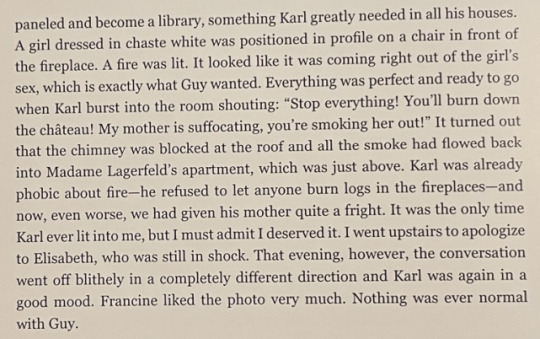
I’m excited to discover 2023′s anecdotes!!

#fashion#vintage fashion#karl lagerfeld#yves saint laurent#cristobal balenciaga#pierre cardin#bernard buffet#andre leon talley#guy bourdin#donna jordan#patti d'arbanville#andre courreges#pierre berge#the beautiful fall#alicia drake#loulou & yves#christopher petkanas#books#quotes#quote#biography#*
91 notes
·
View notes
Text
RITCHIE BLACKMORE'S SECRET REVEALED
I'm sure almost every Purple fan wondered about Blackmore's strange fascination with castles, knights and medievalism overall. RITCHIE WHY??? Why disgracing the legend parading around in ridiculous tights?
Now we finally know the answer!! (very likely)


I almost accidentally made a discovery that our Black Knight is a direct descendant of British royals such as William the Conqueror and Henry Beauclerc.
In fact, that means we can name Richard the Lionheart Ritchie's distant uncle🔥😏
🔥Here you got here the whole lineage of Ritchie down to Charlemagne of the Holy Roman Empire. Of course you can check it on many genealogical websites:🔥
(Keep in mind that there are only 7 female ancestors! (in the old days that mattered))
Richard Hugh Blackmore aka RICHARD IV THE BLACK 🖤🖤🖤
Lewis John Blackmore
Silas Blackmore
Benjamin Blackmore
George Owen Blackmore
John Blackmore
Grace Byfield
John Byfield
Charles Byfield
George Byfield
William Byfield
Richard Byfield
Margaret Pierrepont
George Pierrepont
George Pierrepont
Francis Pierrepont
Henry Pierrepont
Henry Pierrepont
Edmund de Pierrepont
Edmund de Pierrepont
Margaret FitzWilliam
William FitzWilliam
William FitzWilliam
Thomas FitzWilliam
Adela Plantagenet
Hamelin Plantagenet
Adelaide of Angers (Matilda)
Henry Beauclerc of England
William of England the Conqueror
Robert de Normandy (Herleve de Falaise was his wife/lover)
Judith of Brittany (husband - Richard of Normandy)
Conan of Brittany
Judicael Berrenger de Rennes
??? de Bayeux (woman)
Berenger de Bayeux
Pepin of Senlis & Peronne & St. Quentin
Bernard of Italy
Pepin Carloman of Italy
Charlemagne of the Holy Roman Empire
I was dazed and confused when I found out the truth about Ritchie, but maybe his odd interests and character come from this😂
Also don't forget that name 'Richard' means 'strong in rule' 😂
Cursed photo of Ritchie for you as a bonus💗💓💖
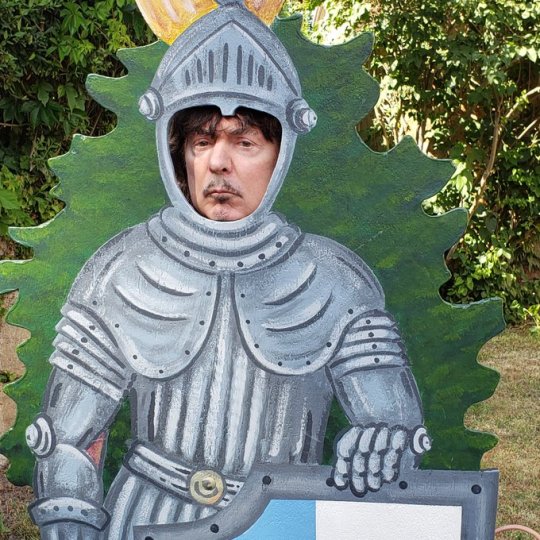
#he king#he couldn't accept that it means nothing today#revelation#Richard IV the Black#ritchie blackmore#deep purple#black knight#Ritchie wanted to rule at least his mates in bands#richard the lionheart#william the conqueror#70s rock
19 notes
·
View notes
Text
A look at the life of French designer Yves Saint Laurent from the beginning of his career in 1958 when he met his lover and business partner, Pierre Berge. Credits: TheMovieDb. Film Cast: Yves Saint Laurent: Pierre Niney Pierre Bergé: Guillaume Gallienne Karl Lagerfeld: Nikolai Kinski Victoire Doutreleau: Charlotte Le Bon Jacques De Bascher: Xavier Lafitte Loulou de la Falaise: Laura Smet Betty Catroux: Marie de Villepin Fernando Sanchez: Ruben Alves Yvonne de Peyerimhoff: Astrid Whettnall Lucienne Saint Laurent: Marianne Basler Anne-Marie Munoz: Adeline D’Hermy Bernard Buffet: Jean-Édouard Bodziak Jean-Pierre Debord: Alexandre Steiger Raymonde Zehnacker: Michèle Garcia Charles: Olivier Pajot Christian Dior: Patrice Thibaud Jean Cocteau: Philippe Morier-Genoud Marie-Louise Bousquet: Anne Alvaro M. Boussac: Gérard Lartigau Brigitte: Laura Martin-Bassot Albert: Joakim Latzko José Maria: Laurent Maria l’Avocat: Arnaud Denis Financier Rothschild: Xavier Alcan Chef de Service Val de Grâce: Julien Lacroix Ouvrière 1 Dior: Déborah Amsens Ouvrière 2 Dior: Sophie Riffont Stagiaire Dior: Laura Giudice Journaliste 1 conférence Dior: Annick Christiaens Journaliste 2 conférence Dior: Julie Bernard Maitre d’hôtel Prunier: Benoît Giros Journaliste 1 rue Dior: Benoît Strulus Journaliste 3 rue Dior: Xavier Hosten Dame Dior: Fabienne Chaudat Journaliste Elle: Jeanne Dandoy Journaliste Marie-Claire: Sandrine Blancke Journaliste 1 boutique YSL: Nicolas Ronchi Journaliste 2 boutique YSL: Stéphanie Doncker Type blouson de cuir: Julien Bruant Baron de Rothschild: Christian Gasc Type Prunier: Jean-Henri Compère Andy Warhol: William Abello Zizi Jeanmaire: Céline Spang Amie 1 Lucienne: Karine Belly Amie 2 Lucienne: Christine Metz Amie 3 Lucienne: Renée Bellocq Ouvrier Oran: Abdelilah Nouili Hamed jeune: Mohamed Amine Touil Hamed vieux: Abdessemad El Meskini Youssef: Reda Zerouali Thadée: Hadrien Bal Amie Betty: Florence Eugene Michèle: Kimly Henry Jeanloup Sieff: Sacha Sieff Un mannequin: Solène Hébert Film Crew: Book: Laurence Benaïm Editor: François Gédigier Director: Jalil Lespert Producer: Wassim Béji Writer: Marie-Pierre Huster Production Design: Aline Bonetto Casting: Nicolas Ronchi Script Supervisor: Agathe Grau Costume Design: Madeline Fontaine Original Music Composer: Ibrahim Maalouf Director of Photography: Thomas Hardmeier Wardrobe Designer: Rachel Raoult Producer: Yannick Bolloré Producer: Julien Deris Executive Producer: Thierry Desmichelle Producer: Franck Elbase Producer: David Gauquié Producer: Sylvain Jouannet Producer: Nicolas Lesage Producer: Etienne Mallet Executive Producer: Lionel Uzan Producer: Nadia Khamlichi Producer: Gilles Waterkeyn Producer: Adrian Politowski Set Decoration: Monica Alberte Set Decoration: Hind Ghazali Makeup Artist: Betty Beauchamp Makeup Artist: Céline Colinet Makeup Artist: Dominique Colladant Makeup Artist: Odile Fourquin Hairstylist: Leila Mauro Hairstylist: Sarah Mescoff Makeup Artist: Khadija Najahi Makeup Artist: Ghislaine Nejjar Hairstylist: Ghislaine Tortereau Makeup Artist: Michelle Van Brussel Casting: Mourad Barouche Sound Re-Recording Mixer: Stéphane Thiébaut Dialogue Editor: Hélène Lamy-au-Rousseau Co-Writer: Jérémie Guez Co-Writer: Yann Apperry Screenplay: Jacques Fieschi Movie Reviews:
0 notes
Text
Une impressionniste oubliée sort de l’ombre au musée de Pont-Aven : Anna Boch
Arts et Expositions
Par Guy Boyer le 06.02.2024
Montée avec le musée d’Ostende, l’exposition consacrée à la femme peintre et collectionneuse Anna Boch (1848-1936) permet de découvrir cette figure méconnue de la période impressionniste et postimpressionniste venue en Bretagne en 1901 et 1912.
Premier événement à bénéficier de la générosité du musée d’Orsay en parallèle à l’exposition « Paris 1874. Inventer l’impressionnisme » (du 26 mars au 14 juillet), l’exposition « Anna Boch. Un voyage impressionniste » au musée de Pont-Aven, jusqu’au 26 mai, met au cœur de son parcours le Portrait d’Eugène Boch de Vincent Van Gogh (1853-1890) prêté par le musée parisien. Cette œuvre importante souligne les liens de cette famille belge avec l’avant-garde des années 1890 et leur goût de la collection.
Collectionneurs de Van Gogh, Gauguin, Marquet
L’exposition commence par la carrière de peintre d’Anna Boch, de ses débuts en Belgique jusqu’à ses voyages en Bretagne et dans le Sud de la France. Malgré certaines œuvres assez faibles, le corpus de cette artiste méconnue surprend par certains éclairs de génie et plusieurs emprunts à ses contemporains comme Segantini ou Valtat. Vient ensuite une section dédiée à ses différentes demeures et ses commandes à des artistes Art Nouveau comme Victor Horta (une réussite) et Maurice Denis (un échec). L’un des chapitres les plus passionnants reste celui consacré à ses collections artistiques puisqu’Anna Boch et son frère Eugène possédaient des Ensor, Gauguin, Van Gogh, Émile Bernard, Paul Signac, Henry Moret et Albert Marquet.
Une fortune de faïence
En Belgique, le père d’Anna Boch est célèbre car il est le fondateur de la société de faïencerie Boch frères (antenne belge de Villeroy & Boch). La famille vit confortablement dans le château de La Closière, près de La Louvière. Dès les années 1870, Anna Boch décore des plaques, plats et assiettes en camaïeu de bleus. Dans ces premières créations de céramique, on peut retrouver des traces de sa formation auprès d’Isidore Verheyden, un peintre de plein air (ne pas manquer son incroyable portrait par Anna Boch, où on le voit penché sur un tableau posé en biais).
Avec le groupe des XX
Dès 1885, Anna Boch rejoint le salon des XX, un cercle artistique fondé par son cousin Octave Maus, où exposent James Ensor et Jan Toorop mais aussi une quantité d’invités étrangers. C’est là qu’elle voit les dernières nouveautés artistiques, du divisionnisme de Segantini au pointillisme de Seurat. On reconnaît dans le travail d’Anna Boch une solidité de la composition (ici le reflet du bouquet de fleurs dans un miroir) et une harmonie des couleurs.
Une famille voyageuse
Aimant se déplacer facilement, Anna Boch achète une Minerva en 1907. On la voit ici, à bord de l’automobile, parmi les paysages du Midi de la France. Deux tableaux superposés permettent de comparer son style et celui de son frère. Devant un même paysage méditerranéen surmonté d’une tour sarrasine, on voit leurs approches différentes. Lui (en haut) schématise la composition, elle (en bas) joue des effets de matières et de couleurs. Même le chauffeur, Albert Lepreux, est de la partie et plante son chevalet avec eux dans la nature, de la Normandie au Maroc.
La Bretagne en deux temps
En 1901 et en 1912, la troupe sillonne la Bretagne. De Bénodet à Carhaix, Anna Boch en ramène des paysages maritimes. Aux plages des bords de l’Odet du premier séjour succèdent les falaises et rochers de la Bretagne du nord. Les grands formats panoramiques sont ensuite remplacés par des toiles au cadrage resserré.
Des commandes aux artistes
C’est l’architecte belge Art Nouveau Victor Horta qui restaure en 1895 la villa d’Anna Boch dans le quartier de Saint-Gilles à Bruxelles. Huit ans plus tard, la commanditaire déménage dans une maison construite par Paul Hermanus à Ixelles, où elle fait transporter le décor de Horta, cheminée comprise. Elle imagine également un grand décor qu’elle confie à Maurice Denis mais devant toutes les allégories antiques que celui-ci propose, elle préfère renoncer.
En pleine nature
L’exposition se conclue par une section plus faible consacrée aux liens d’Anna Boch avec le groupe de peintres luministes Vie et lumière. Les scènes bucoliques de ramasseurs de glands ou de ramendeuses de filets, qu’elle réalise alors, perdent en nervosité et en contrastes colorés. Pourtant, c’est l’époque d’une certaine reconnaissance publique en France puisqu’elle expose à la galerie Druet en 1908. Dans les années 1930, elle organise le devenir de ses collections, donnant plusieurs œuvres aux musées royaux des Beaux-Arts de Belgique ou au musée d’Ixelles.
https://www.connaissancedesarts.com/arts-expositions/impressionnisme/une-impressionniste-oubliee-sort-de-lombre-au-musee-de-pont-aven-11189177/


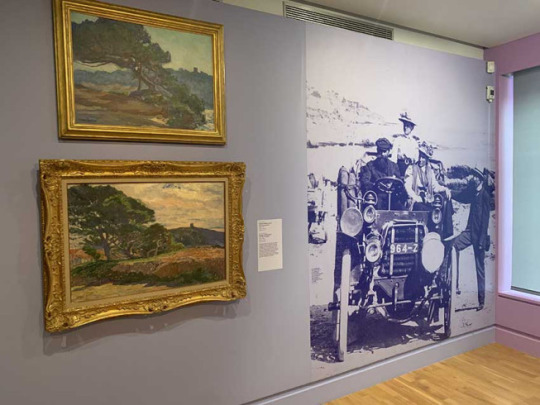
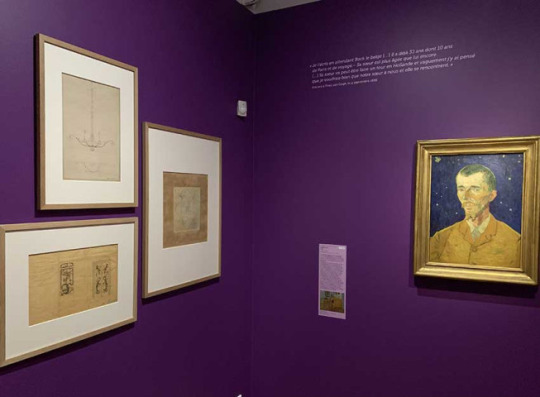


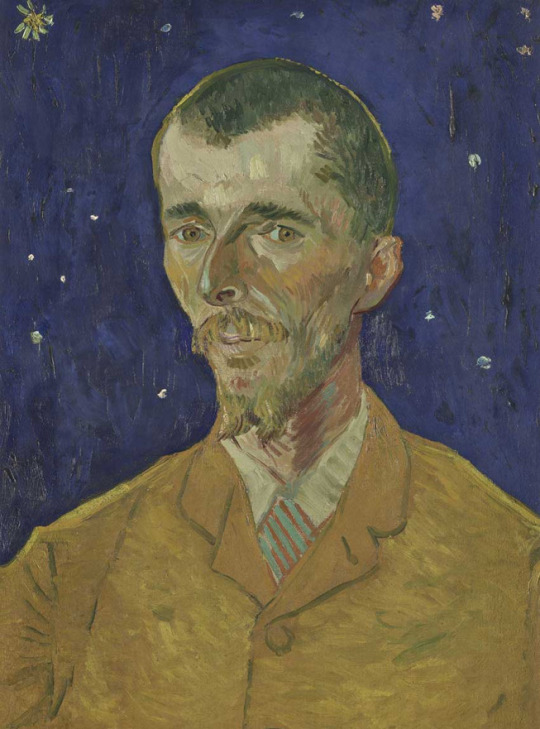
#france#brittany#breizh#bretagne#aesthetic#artists on tumblr#artistsoninstagram#artistsupport#meet the artist#painter#impressionistpainting#impressionistart#french impressionist#impressionistic#impressionism#orsay#louvre#met museum
0 notes
Text

"Pour bien produire, l’Etat doit tout absorber seul, il doit répartir et comme l’on ne produit bien que si la loi fixe la tâche de chacun, de plus en plus, le réseau serré des règlements serre l’homme et une police de plus en plus puissante veille sur les villes énormes proliférant en cancer le long des routes, bourgeonnant près des gares et refluant le long des rives des fleuves encombrés de péniches. Et tous peuvent prendre pour devise :"Qu’importe la justice si la production augmente !" […] Communisme, fascisme, étiquettes confuses qui nous cachent la réalité commune à tous les Etats du monde actuel. Notre civilisation ne désigne pas un "isme", elle est inclassable, née d’un siècle de changements techniques. Pas un économiste ne saurait au fond définir les causes profondes de la crise ; la crise, c’est un monde qui est absurde à l’homme qui n’a pas su le comprendre. Et nous sentons confusément peser sur nous cette domination lorsque, sortis des meetings où nous nous rassurons les uns les autres par nos cris, nous sentons peser sur nous de tout son poids la capitale, avec ses avenues aux falaises de façades, illuminées par le feu de la réclame qui la dévore, battue par la mer de sa propre agitation."
Bernard Charbonneau, Jacques Ellul, Nous sommes des révolutionnaires malgré nous, 1936.
1 note
·
View note
Text
A la découverte des plus belles les îles du Morbihan
Faire une croisière autour des îles du Morbihan, en Bretagne Sud, c’est naviguer entre le granit, les plages de sable blancs et la verdure des campagnes. Faire du voilier dans ce cadre merveilleux ne laisse aucun plaisancier insensible. Je le dis souvent, le bout du monde est souvent à portée de mille de nos ports d’attache ou cales de mises à l’eau. Découvrir l’aventure et des paysages magnifiques peut se faire le temps d’un week-end, d’une semaine ou plus le temps d’une saison estivale. La Bretagne Sud en est le parfait exemple. Une croisière entre les îles du Morbihan est l’occasion de découvrir des paysages magnifiques, entre petits ports cachés au fond des rias et grande plages de sable fin et falaises imposantes, il y en a pour tous les goûts. Les bases de départ sont nombreuses pour profiter au mieux de ce plan d’eau qui à l’avantage de proposer des eaux abritées, à l’est de la Presqu’île de Quiberon, mais aussi de nombreux ports et marinas, accessibles en quelques milles si le besoin de se mettre à l’abri se fait ressentir. La marina la plus à l’est est celle d’Arzal, et la Roche Bernard, dans la Vilaine. A l’opposé, la rade de Lorient dispose de plusieurs ports très bien équipés. Pour ceux qui naviguent en petits voiliers, les cales de mises à l’eau sont très nombreuses, sur toute la côte de la région. Toutes les îles du Morbihan disposent d’un ou plusieurs ports accessibles avec différents services. Dans le même temps, pour ceux d’entre nous qui naviguent sur des petits voiliers, des campings sont proposés sur toutes les îles. Alors commençons notre croisière entre des Îles du Morbihan en partant de l’Ouest, et la rade de Lorient.
Groix, l’île des thoniers
Groix a une place spéciale dans mon cœur. A portée de la rade de Lorient, qu’elle protège des vents de sud et sud-ouest, Groix possède un caractère et une âme qui marque les plaisanciers de passage. Le principal port est Port-Tudy. L’accueil est vraiment sympa et le port, très vivant avec les aller-venus du courrier venant de Lorient. Un tour de l’île, à pied, prendra deux grosses journées. Le tour de l’île fait 34km via le sentier côtier. La côte nord donne une vue magnifique sur toute la côte. En vous dirigeant vers l’est, vous longerez plusieurs plages dont Les sables Rouges et les grands sables. Vous pourrez d’ailleurs, par beau temps, voir belle-Île de la plage des Sables Rouges. Si vous disposez d’un dériveur, vous pourrez venir échouer dans le port de Locmaria, sur la côte Sud. La partie ouest de l’île est plus sauvage, avec ses hautes falaises laissant la mer s’infiltrer dans des criques comme le « Trou de l’Enfer ». Des endroits idéals pour la plongée. Au retour, vous aurez le choix entre les différentes tavernes et restaurants pour vous restaurer avant de reprendre la mer. Je vous conseille, bien évidemment, la taverne de Ty-beudeff, connue dans le monde entier.
Belle Île, l’île tant convoitée
Belle-Île est la plus grande île du Morbihan, et de Bretagne d’ailleurs. L’île a été très convoitée, tout au long de l’histoire de Bretagne et de France. Elle a vu passer des vikings, des bretons, des anglais et des acadiens, revenus du Canada lors du départ des français. Son principal port, et principale ville, Le Palais, est un héritage de cette histoire avec sin impressionnante citadelle Vauban qui garde le bassin à flot. Ici aussi, l’ambiance est incroyable. Il y a du bruit et du passage avec le marché et les vedettes apportant son flot de touristes quotidien. Pour ceux qui préfèrent le calme, le port de Sauzon, à l’Ouest de Belle-Île, est une véritable carte postale avec ses maisons colorées, nichées au fond d’une petite ria. Ici, pour profiter au maximum de l’abri, il faut venir en dériveur ou multicoque. Vous pourrez aller vous promener et vous baigner à la Pointe des Poulains, entre plages et falaises sauvages. Au sud, les falaises sont plus nombreuses. Mais proposent d’excellents mouillages nichés au fond des rias, cachées entre des roches comme les aiguilles de Port-Coton.
Houat, et ses grandes plages de sables fins
A quelques encablures, au nord-est de Belle-Île, se trouve Houat, et l'entrée de la Baie de Quiberon. Houat est une carte postale pour qui aime mouiller près de longues plages de sable blanc. Si le petit port de saint Gildas est bien abrité, c’est bien la grande plage de Tréac’h Goured qui attire tous les plaisanciers et visiteurs. Vous pourrez vous y baigner dans une eau transparente et pêcher poisson et crustacés. Pourtant, je vous conseille de pousser plus au sud, pour mouiller Beg Salus. Cette petite baie et sa plage sont moins connues, mais beaucoup plus protégées des houles et vents d’est des brises côtières. Ces dernières peuvent être fortes l’été. Vous serez, de plus, moins nombreux à vous partager le mouillage. L’île est plutôt sauvage.Il n’y a pas beaucoup d’arbres. Le petit bourg est très sympathique et vous y trouverez de quoi boire un verre et vous restaurer.
Hoedic, l’île des passionnés
Par rene boulay, CC BY-SA 3.0 Hoedic est, sans aucune hésitation, mon autre coup de cœur avec Groix. L'île est la plus petite des îles habitées, côté océan. C’est aussi une des plus agréables îles du Morbihan, en escale. Vous pourrez accoster via deux ports. Le principal, le port de Hoedic, dispose de 3 tonnes qui permettent de mouiller à plusieurs bateaux. Attention aux chandeliers et barres de flèche, par brise d’est. Ces bouées sont toujours à flot. Le bourg est à quelques minutes du port et de sa petite plage. Là, c’est une ambiance festive et joyeuse qui vous attend. Le petit bourg vous accueillera sur sa « grande place » pour chanter tout en buvant une bonne bière. Le deuxième port est situé au sud de l’île. Le Port de la Croix dispose d’un môle abritant le port des houles d’ouest. Il sera réservé aux dériveurs, biquilles et multicoques qui échoueront à marée basse. Une longue plage, là aussi, permettra d’arriver à terre avec son annexe et offrira une zone de jeu parfaite pour les enfants.
Les îles du Golfe du Morbihan, entre terre et mer
Nous allons maintenant venir nous protéger dans le Golfe du Morbihan, et ses 59 îles. Oui, vous avez bien lu : 59. je dois reconnaître que nombre d’entre elles ne sont pas habitées. La navigation dans le Golfe, si elle n’est pas dangereuse, doit prendre en compte les courants, très puissants à chaque marée. Une autre image des îles du Morbihan. L’île aux moines L’Île aux Moines est la plus grande île du Golfe du Morbihan. Elle mérite une balade pour découvrir son bourg et ses magnifiques maisons. Le tour de l’île permettra de bénéficier d’un panorama total sur le Golfe. Un détour par la plage de Port Miquel permettra de se poser à l’ombre des pins. Sinon, vous pourrez opter pour a Grande plage et ses cabanons. L’île D’Arz, terre de marins L’île d’Arz est l’autre principale île du Golfe. Plus sauvage que l’île aux Moines, elle contraste beaucoup avec sa grande sœur. L’Île d’Arz est une terre de marin. On ne compte plus ses enfants qui ont fait les grandes écoles de navigations pour diriger des bateaux aux 4 coins du monde. Elle accueille l’école des Glénans. En vous promenant le long des berges de l’île, entourées d’ajoncs, et de ses longues plages, vous aurez accès à une autre image du Golfe, plus sauvage, plus protégée aussi, sans doute. Les principales îles Au delà de ces deux communes, le Golfe du Morbihan propose plusieurs îles, parfois privées. Mais ce qui est bien en Bretagne, c’est que même privée, vous pouvez venir découvrir la berge. Il est possible de mouiller à l’abri des vents d’ouest le long de nombre d’entre elle. Je pense, par exemple, à l’île de la Jument ou l’île Longue ou encore l’Île Berder. L’est du Golfe sera réservée, pour la nuit, aux dériveurs. Ces derniers pourront mouiller à l’abri d’îles comme l’Île de Boed ou encore l’île Ilur
Quelques conseils de navigation autour des îles du Morbihan
La navigation, en Bretagne Sud, autour des îles du Morbihan, est plutôt sans danger, surtout comparé à la côte nord. On peut parler de croisière simple et rassurante. Entre Groix et Lorient, il faudra composer avec le plateau des Birvideaux. S’il ne présente pas de dangers particuliers, il peut soulever une houle qui peut être désagréable. Il est possible de faire le tour de Groix et de belle Île sans aucun danger. Les quelques récifs sont bien balisés. Entre Belle Île et les îles d’Houat et Hoedic, il en est autrement. Les deux îles forment une barrière protégeant la baie de Quiberon. La présence de récifs tout autour de Houat, entre autres, est à anticiper lors de votre navigation vers le nord. Il existe deux passages pour entrer dans la Baie. Le premier, entre les îles d’Houat et Hoedic est le plus long, mais le plus agréable. Si vous êtes pressés, vous pourrez emprunter le passage de La Teignouse, entre Houat et la Presqu’île de Quiberon. Le passage est un véritable tapis roulant. Le courant y est très fort et peu, lui aussi, soulever une grosse houle. Un passage impressionnant mais sans danger. Enfin, le Golfe du Morbihan demandera de garder un oeil sur la carte marine ou le lecteur de cartes. Les courants peuvent être assez puissants à certains endroits. Un dicton stipule que le courant n’envoie jamais sur les récifs ou les vasières… mais bon. Dans le pire des cas, si vous vous laissez divertir par la beauté des lieux et que vous restez envasés, il ne vous restera plus qu’à attendre la prochaine marée. Le Guide complet pour louer un bateau

Read the full article
0 notes
Text
Bernard Falaise, "Répéter; Ressort; Pour F."
0 notes
Audio
Choeurs - Les mouillages
Habitants des mouillages, O vous qui vivez là tout près des sources chaudes Ou bien sur le rivage de la Vierge aux flèches d'or, Il revient le héros! Il revient! Tandis que sur la vaste mer Il errait loin de sa patrie, Nous l'attendions depuis douze mois, Sans nouvelle de lui, Et de sa malheureuse épouse Le coeur se consumait. Qu'il vienne! Qu'il vienne! Que les rames nombreuses Du navire qui le porte Ne rompent la cadence Qu'il vienne! Qu'il vienne! Qu'il nous vienne aujourd'hui Tout entier imprégné par le filtre d'amour Promis par le Centaure Habitants des mouillages, O vous qui vivez là tout près des sources chaudes Ou bien sur le rivage de la Vierge aux flèches d'or, Il revient le héros ! Il revient ! Tandis que sur la vaste mer Il errait loin de sa patrie, Nous l'attendions depuis douze mois, Sans nouvelle de lui, Et de sa malheureuse épouse Le coeur se consumait. Qu'il vienne! Qu'il vienne! Qu'il nous vienne aujourd'hui Tout entier imprégné par le filtre d'amour Promis par le Centaure Promesse du Centaure...
7 notes
·
View notes
Photo















Il était une fois le diable 1986
#Il était une fois le diable#1986#devil's story#bernard launois#cheval#chat#falaise#fusil#chef d'oeuvre total#10/10
7 notes
·
View notes
Text
A Bridge Too Far: Operation Market Garden 75 years on
In May 1945 it was the Russians who hoisted their flag over the ruins of the Reichstag building in Berlin. In this way World War Two, in Europe, was signalled as being effectively over. However, the troops who captured Berlin could easily have been British or American, if events around a small town in Holland had turned out differently.
Operation Market Garden, launched in September 1944, was an unsuccessful Allied offensive mainly, fought in the Netherlands. It was the largest airborne operation in history up to that time.
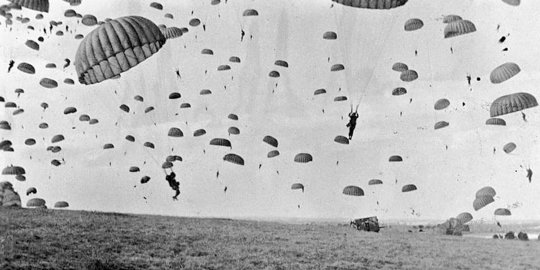
The operation was a daring one and it was the brainchild of the British General Bernard Montgomery. This operation was even the subject of the 1977 star studded movie A Bridge Too Far directed by Richard Attenborough. Montgomery intended the airborne offensive to allow the allies to break into the German heartland and to end the war, quickly. However, this was not the case, the allied offensive was to prove to be a costly failure and may have even delayed their victory in Europe.
Why did this operation fail? Was it Montgomery's over-optimistic planning, poor strategy, poor leadership, German resistance or the terrain?
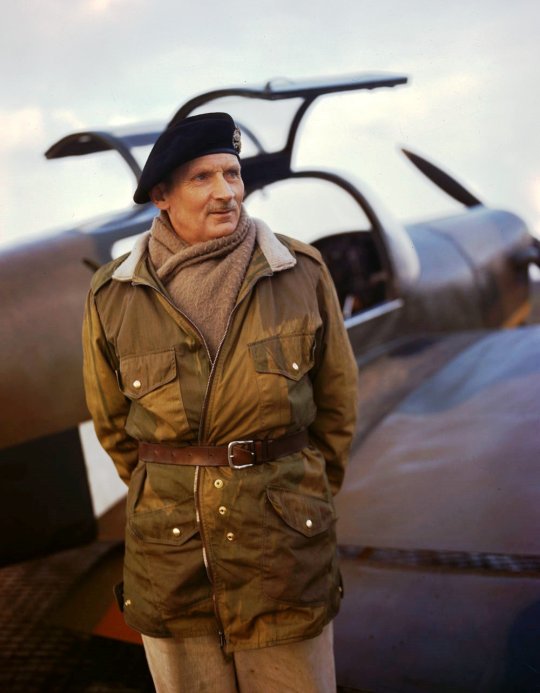
Background
The Allies had landed in Normandy on the 6th of June 1944. After establishing several beach heads in Normandy, the Allies managed to push forward into the Normandy countryside. The Germans initially managed to slow the Allies advance, however, a brilliant piece of Allied strategy, resulted in the encirclement of a large part of the German army, in the Falaise Pocket.
The combined Anglo-American divisions inflicted huge losses on the Germans. The German army was forced into a headlong retreat. Paris was soon retaken by the Allies. The German army was practically forced out of France and retreated towards Alsace-Lorraine and Belgium. It seemed to many that the Allies were on the verge of invading German and some even spoke optimistically of ending the war by Christmas.
However, in truth, the Allied successes had brought its own problems. The Allies supply lines were overstretched and this was slowing down the Americans and British in particular, the shortage of oil meant that Patton’s armored divisions had to halt their advance. This was to prove crucial and it allowed the Germans to regroup in the west, when it appeared that they would disintegrate, leading to the end of the war.
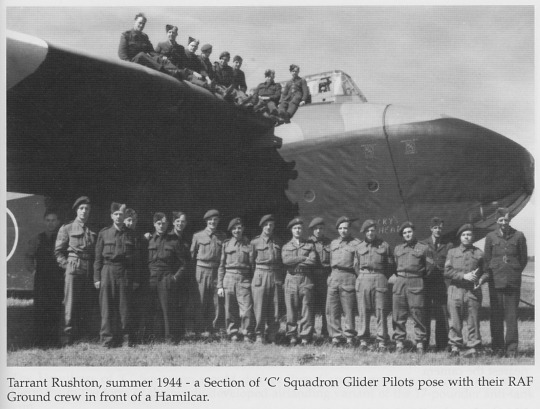
Reasons for Market Garden
By the Autumn of 1944, it was apparent to the Allied High Command that the Germans had managed to retrieve the situation and would offer stiff resistance to any future offensive. In August 1944, a British assault failed to take the deep water port of Antwerp and had allowed some 80,000 German troops from Scheldt Estuary.
This became known as the ‘Great Mistake’ and was perhaps one of the biggest in the entire war. The Allied high command was reluctant to attack the Germans from eastern France, as the German government had constructed a massive line of defenses, consisting of fortresses, to protect their western border, this was known as the Siegfried Line. The British and the Americans had to go through the Low Countries to invade Germany and end the war.
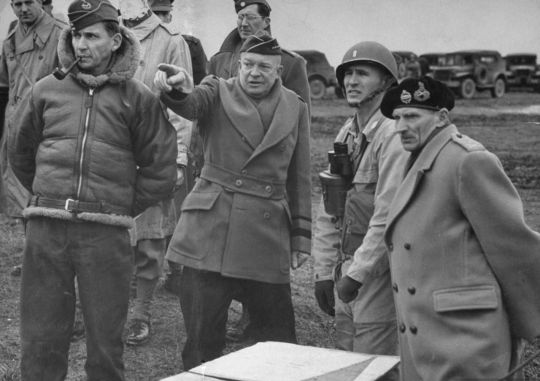
The Allies believed that they would need an innovative plan to break the German frontline in the Low Countries and in Alsace-Lorraine. General Eisenhower and other leaders turned their attention to the Low Countries. It offered them ports which could be used to re-supply the Allied divisions, who still were reliant on the Normandy ports for their supplies.
The more forward thinking of the allied strategists became concerned about the Rhine. This river would form a formidable natural barrier to any Allied advance but if they liberated the Low Countries it would allow them to cross the Rhine and then to cross into Northern Germany and then onto Berlin.
The American and the British governments became increasingly eager to end the War in Europe and they wanted to turn their attention to the Pacific War. Then the western allies believed that they were in a race to Berlin with the Soviet Army and they did not want the Red Army to capture all Germany and to turn it into a client state of Moscow.
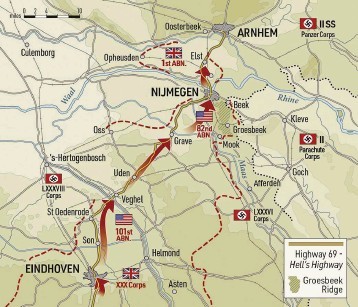
Montgomery's Strategy
The allies needed to break the Germans resistance and cross the Rhine in the Low Countries. General Bernard Montgomery, the hero of the British victory at EL Alamein, proposed a daring plan. Field Marshal Montgomery’s goal, as recounted in his memoirs was to invade Germany by securing the bridges over the Lower Rhine in the Netherlands.
This idea had several advantages such as by-passing the Siegfried Line. Montgomery wanted an airborne assault in the Netherlands to secure key bridges over the Lower Rhine. This would allow the Allies to enter into the Northern German plains, where there were no natural barriers, to their advance to Berlin.
Montgomery’s plan was initially more ambitious and it was rejected by General Eisenhower. Angered by Eisenhower's reluctance, Montgomery flew to Brussels that afternoon to meet him. Montgomery requested that Eisenhower's Chief Administrative Officer leave the meeting, while insisting that his own should remain. He then tore a file of Eisenhower's messages to shreds in front of him, argued for a concentrated northern thrust, and demanding priority in supplies. So fierce and unrestrained was Montgomery's language that Eisenhower suddenly reached out, patted Montgomery's knee and told him, "Steady, Monty! You can't talk to me like that. I'm your boss."
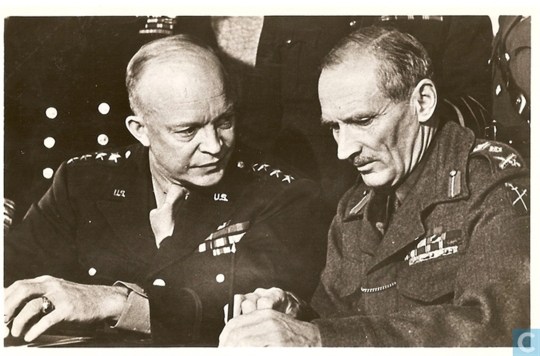
Eisenhower stated his belief that advance on a broad front would soon provoke German forces to collapse. He told Montgomery why a "single thrust" toward Berlin was not going to be accepted.
“What you're proposing is this – if I give you all the supplies you want, you could go straight to Berlin – right straight (500 miles) to Berlin? Monty, you're nuts. You can't do it. What the hell[?] ... If you try a long column like that in a single thrust you'd have to throw off division after division to protect your flanks from attack.”
Nevertheless, Eisenhower consented to Operation Market Garden after Montgomery scaled back his plans in response to Eisenhower’s criticism.
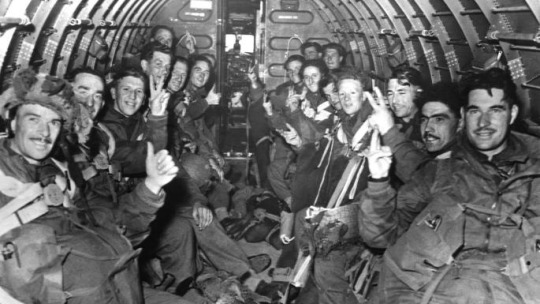
Montgomery proposed the following:
Airborne units would be dropped behind the German lines to secure the bridges over the Meuse and the two tributaries of the Rhine. The airborne units would hold the bridges until the British ground forces arrived. Montgomery believed that not only would this airborne operation succeed in securing bridges over the Rhine, but result in the retreat of German Divisions into Germany.
The Allied High Command agreed to the plan. Montgomery staked his reputation on the strategy and was backed by Churchill. The offensive was to be called Market Garden.
The 'Market' part of the operation involved the airborne aspect of the operation. The operation would involve four airborne divisions. The paratroopers would land in the area by gliders or they would parachute into the target zones.
Market Garden was to be executed by 41.628 English, American and Polish airborne troop and they would also be supplied with some light artillery. There were American, British and Polish units involved in the massive airdrops.
The ‘Garden’ part of the plan would involve several British Armored Divisions moving into the Netherlands to link up with the paratroopers and to defend the bridges from any German counterattack.
According to Montgomery, for the strategy to have worked it was dependent on two things, the quick capture of all the bridges by the Allies and the ground forces linking with the paratroopers, within days.
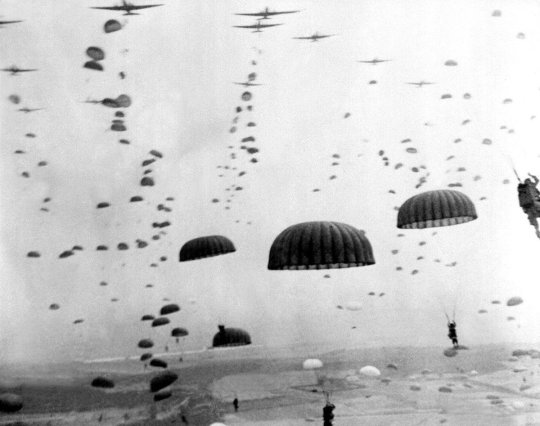
The Battle
Operation Market Garden began on the 17th of September 1944. It was a coordinated action by American, British a Polish Airborne and mainly British forces. The operation began with heavy air raids, in order to weaken any resistance. The paratroopers began landing at 13.00hrs around targets in the Netherlands, chiefly Eindhoven, Arnhem and Nijmegen. The paratroopers had the advantage of surprise and they achieved their objectives. The Germans had been taken completely by surprise.
The initial phase of the operation was a total success. It had been feared that the Germans would blow up the bridges and this would mean that the plan would have to be aborted. The rapid capture of the bridges meant that the ground forces would be able to reach the landing zones, and support the paratroopers.
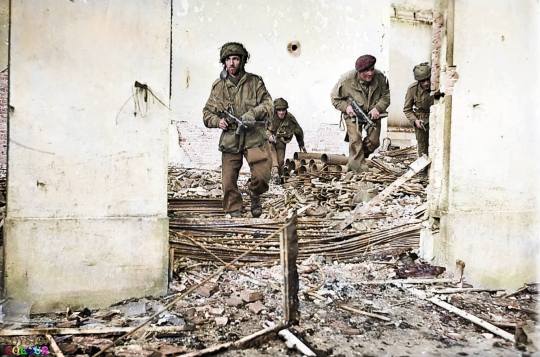
The British ground forces fought their way to Nijmegen and captured the city, after some fierce fighting. One after another the bridges were captured by the British Ground forces. The operation appeared to be going to plan despite heavier than anticipated German resistance.
The most important bridge was Arnhem, this was the most strategically significant bridge and it had to be seized by the ground forces if Market Garden was to succeed in its objectives. The British paratroopers had captured the bridge but they soon came under fierce attack from units of the crack 9th and 10th SS Panzer Divisions. The SS had armor and tanks and they pounded the British paratroopers mercilessly.
The British paratroopers soon found themselves surrounded as the SS had encircled them. The lightly armed British soldiers fought bravely, but they could not hold out for long. An elite British unit, the Irish Guards, was fighting its way forward to help the airborne troops.
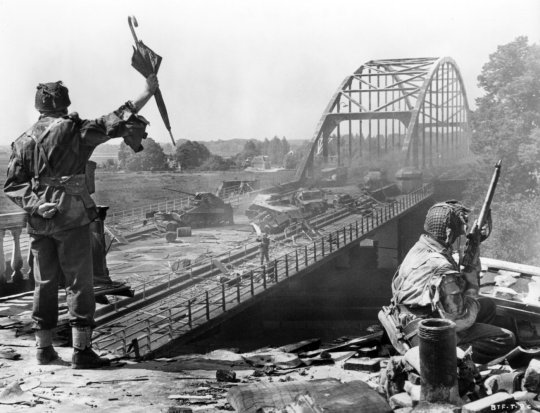
However, because of the terrain, they had to fight their way up to Arnhem on a single road and they were constantly attacked. This road came to be known as the Highway to Hell. The tanks of the Guards could not leave the narrow road as the ground was very marshy and much of it was bogland. As the Irish Guards made their way to Arnhem they were easily picked off by the Germans, who attacked them from the cover of woodland.
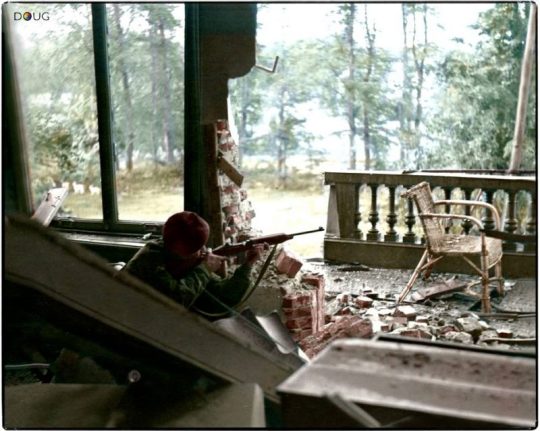
Eventually, such was the ferocity of the German resistance that the British came to a halt. The paratroopers at Arnhem were isolated and cut-off and were forced to surrender. Operation Market Garden had achieved all of its objectives, except the most important one, the capture of the Bridge at Arnhem.
Montgomery’s Optimistic Planning
Even before the start of the operation, many feared that Montgomery’s plan was too optimistic. The commander of the Polish airborne unit declared that the plan was flawed but went with it anyway.
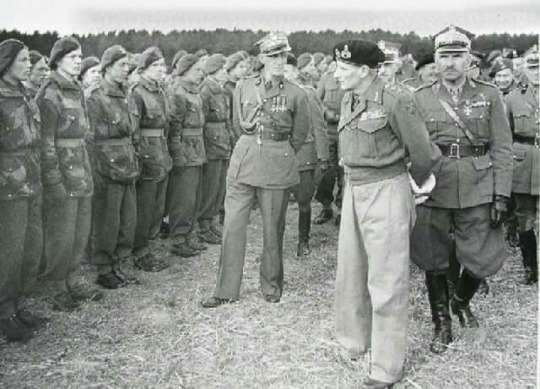
No one really knows who on Montgomery’s senior staff actually famously stated that the prime objective of the offensive the Arnhem Bridge was ‘a bridge too far.’ Whoever said it, he meant that Montgomery’s aims were simply too ambitious and that he was asking too much of his men.

Montgomery also assumed that the paratroop unit could retain their landing zones and the bridges for a given period of time. Paratroops were only lightly armed and without support from ground troops and tanks they could not hold out for long.
Lt-General Sir Frederick ‘Boy’ Browning - considered to be the father of the British Airborne forces and who comanded the 1st Airborne Corps - was wrong to believe that his airborne troops could resist assault from ground troops supported by armour for several days and did nothing to question Monty’s assumptions but reinforce them.
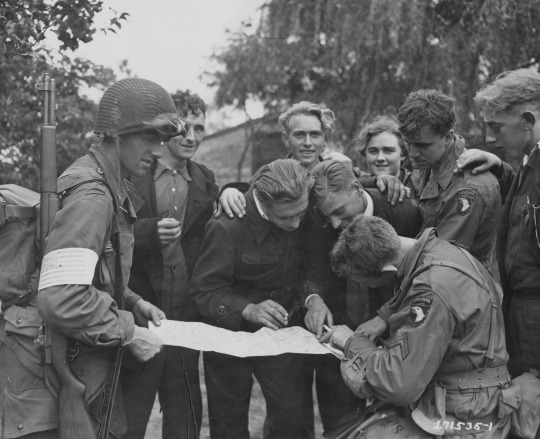
Crucially Montgomery and most of his senior staff failed to understand the terrain that he expected his men to fight in. The roads in the Netherlands were narrow and that the ground around them was unsuitable for armour. This was a fundamental error - Montgomery had simply assumed that his tanks could make their way rapidly to the landing zones, by using only the roads.
During the battle, the roads became death traps for many British units and they soon became clogged with burned-out tanks and vehicles and this critically delayed the ground forces coming to the support of the paratroopers in Arnhem, in particular. Perhaps the biggest failing of the Montgomery plan was that it assumed that the Germans had been decisively beaten and that any counter-attack that they could launch in the area would be limited.
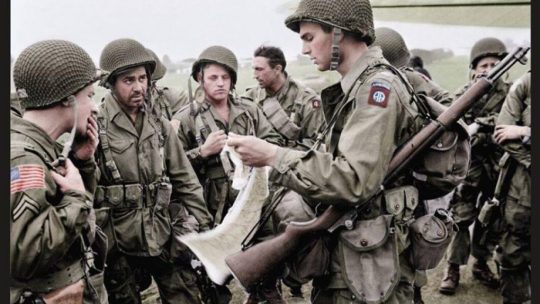
German Counter-attack
General Walter Model with SS-Brigadeführer Heinz Harmel The Germans had been driven back some two hundred miles in a matter of weeks. The British and the Americans dominated the skies and constantly harassed the Germans. Here the bravery and courage of the allied forces - 82nd and the 101st Airborne forces comes to mind as well as the Irish Guards.
The roads had become very unsafe for the Germans and they had also come under attack from the local resistance movements. The Germans had lost some 90,000 killed or wounded during the summer of 1944 and a further 200,000 had been taken prisoner or missing in action.
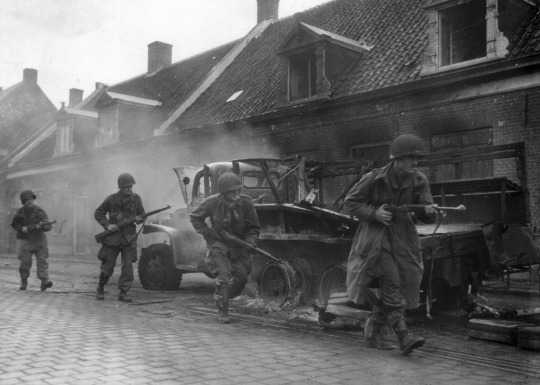
However, after the failure of the British army to encircle the German army in the Scheldt Estuary, allowed the Germans time to regroup in the Netherlands. The German front had begun to stabilise. They were also ably led by the very experienced General Walter Model. He also received some reinforcements in the form of the remaining units of the 9th and 10th SS Panzer Divisions.
Unfortunately, for the Allies, especially the British, the SS units were positioned in Arnhem. This was not merely bad luck, but due to good German intelligence.
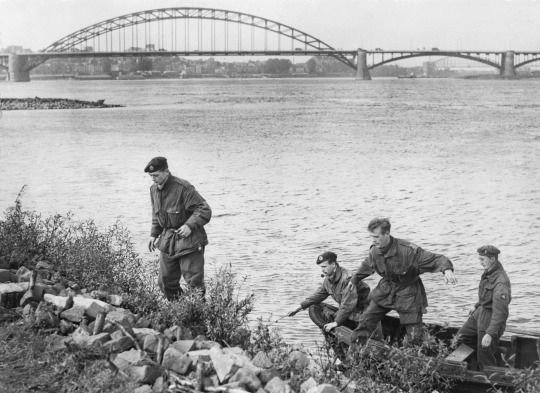
Intelligence Failure
The Germans had anticipated that there would be an offensive launched with the objective of seizing Arnhem, Wesel, and Nijmegen. A senior intelligence officer argued that the British and the American would use airborne troops. However, he did not predict where the assault would be. Nevertheless, German intelligence was able to provide the High Command with the information they needed to prepare for any planned Allied attack. The German General Model heeded his intelligence officers and this was to prove decisive.
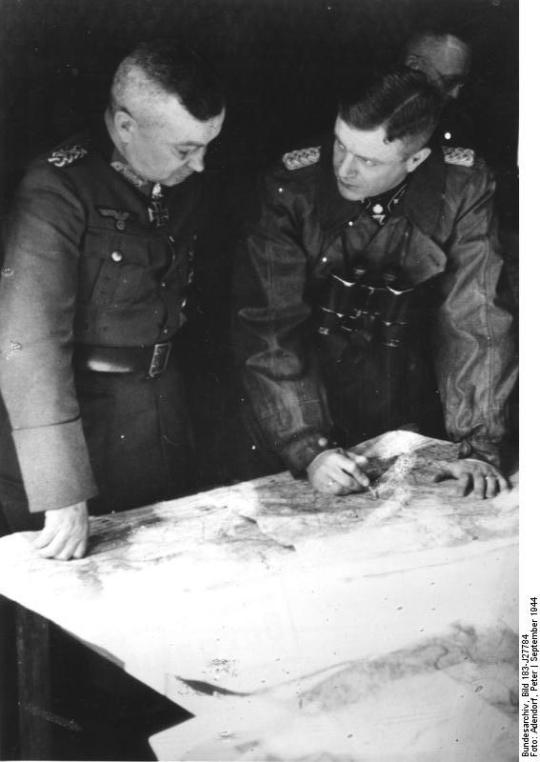
The British had excellent intelligence. They had reliable information on the movements of the Germans, from the Dutch Resistance and they could also employ aerial reconnaissance planes to obtain photographic intelligence. One reconnaissance mission was able to provide images that seemed to show German forces in the Arnhem area. This was confirmed by information from the local resistance. This was compelling proof that the Germans had significant forces and that any air assault on the region, would be a great risk.
It was Lt.Gen Frederick Browning who downplayed evidence brought to him by his intelligence officer, Major Brian Urquhart, that the 9th SS Panzer Division Hohenstaufen and the 10th SS Panzer Division Frundsberg were in the Arnhem area, but was not as confident as he led his subordinates to believe.
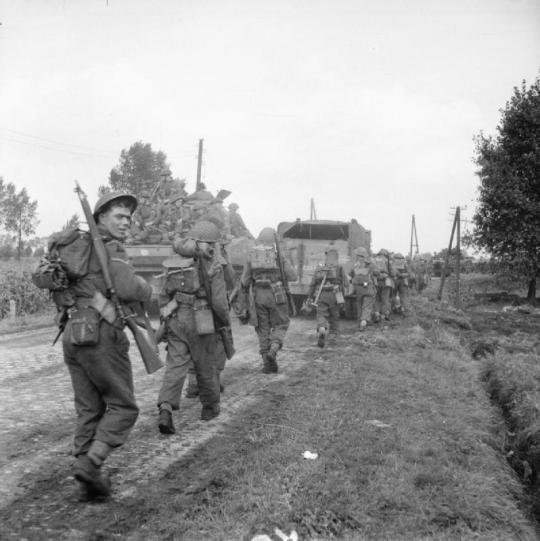
According to Major-General Urquhart, GOC of the British 1st Airborne Division, when informed that his airborne troops would have to hold the bridge for two days, Browning responded that they could hold it for four, but later claimed to Urquhart that he had added: "But I think we might be going a bridge too far."
When Major Brian Urquhart tried to report this up the chain of command to Montgomery, he was not believed. When Major Urquhart tried to persuade Browning and Montgomery that there was a large build-up of German forces near Arnhem, he was relieved of his command and rumours spread that he had a nervous breakdown. Montgomery’s refusal to heed intelligence was to result in a near disaster for the British. It appears that the he and his senior generals refused to countenance anything that contradicted Monty’s own views as he was utterly convinced of the brilliance of his plans for Market Garden and his own infallibility.

Consequences of Market Garden
The operation was not a total failure as it did lead to the liberation of large areas of southern Netherlands and gained hold of several strategic bridges. However, it failed to secure the key bridge at Arnhem, that would have allowed the Allies to cross the Rhine.
Quite simply, the failure at Arnhem meant that any planned invasion of Germany had to be delayed.
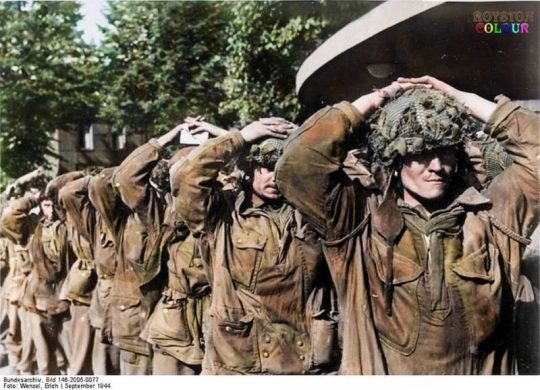
The Germans, although they had lost ground, were able to establish a strong defensive line. In total, the Allies had suffered some 15,000 casualties and had many thousands more taken prisoner. The Germans had also lost equipment and vehicles that they could ill-afford to use.
An unintended consequence of the offensive was a serious famine in the Netherlands. The Dutch railways stopped during the battle, to stop German reinforcements from getting to the front line. In revenge, the Germans forbade the transportation of food, by train and in the following winter there were serious food shortages throughout the Netherland’s and close to 20,000 died of starvation or malnutrition.
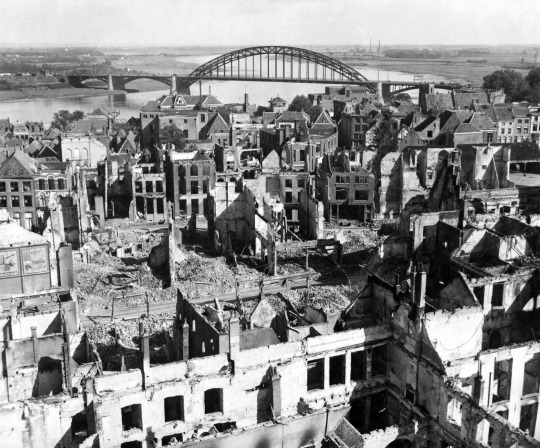
Conclusion: so near and yet so far
Operation Market Garden was a tactical defeat for the Allies, as it failed to achieve all its objectives. It failed to secure the key bridge at Arnhem and this meant that they were halted at the Rhine. This probably delayed the eventual Allied victory in western Europe.
The operation failed because of a failure in planning, intelligence, and a lack of understanding of the nature of the terrain.
While every previous major Allied operation had taken months if not years of meticulous planning, Market Garden was proposed in haste to try to take advantage of what appeared to be the German army retreating in disarray.
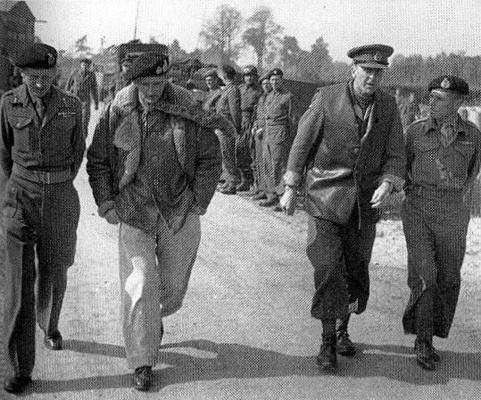
And the biggest blunder was landing 1st Airborne up to 13km away from the bridge, as paratroopers work best when they land right on top of their target, taking the defenders by surprise.
There was also a mistaken belief that the Germans had been all put defeated. Market Garden was moreover fundamentally flawed as it mistakenly believed that airborne forces could resist heavily armed troops for an extended period.
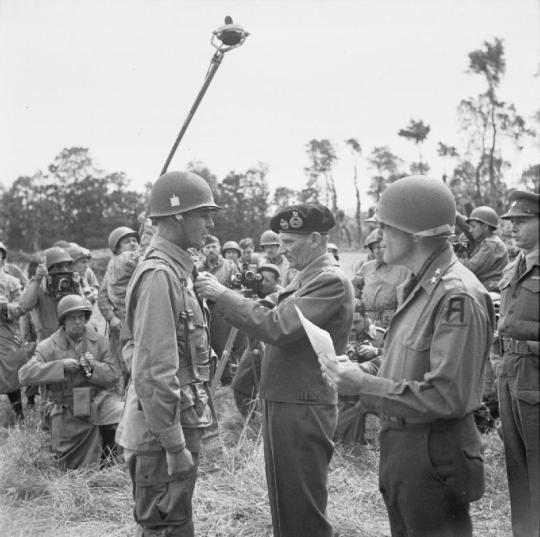
While not exclusively to blame, many of these failures were a result of Montgomery and his over-optimistic ideas and his arrogance. The failure of Operation Market Garden was largely the result of the poor leadership and tactics of General Montgomery. Monty admitted his mistake – the only time a senior Allied commander acknowledged a failure – but still claimed the operation was “90% successful”.
No one can say for sure who coined the phrase “a bridge too far” but it would have been more accurate to say Operation Market Garden was “too far from the bridge”.
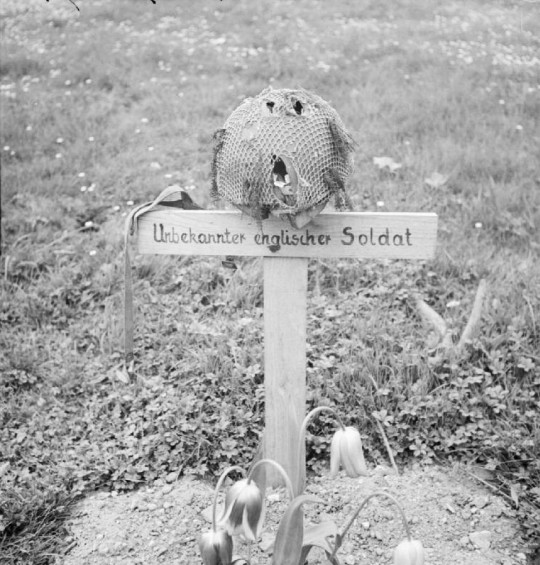
#operation market garden#market gaden#world war two#war#military history#history#montgomery#britain#america#europe#germany#netherlands#army#airborne
36 notes
·
View notes
Audio
Listen to: Quattro I by Klaxon Gueule (1997)
Michel F Côté (drums), Bernard Falaise (guitar), Alexandre St-Onge (bass) + Christopher Cauley (alto saxophone).
1 note
·
View note
Text
On the 6th of June 1944, the Western Allies landed in Normandy.
What followed was a bitter, protracted struggle to secure the beachheads, to capture the major cities of the province (perhaps most notably Caen and Saint Lo) and ultimately to break out into the French heartland. This was not achieved until August, when the German defenders were broken at the Battle of Falaise. What remained of the Wehrmacht in France fell into a headlong retreat eastwards - and there was no respite in Eastern Europe, where the Soviet offensive, Operation Bagration, shattered all in its path.
As the French and Americans rolled into Paris, the Allied commanders began to believe that German collapse was imminent. Huge swathes of France were liberated in days - British and American armoured columns found themselves stopped not by German resistance but by fuel shortages. It seemed that the collapse of the German Army in 1918 was being repeated; it felt like the war was all but over.
In Britain, the First Allied Airborne Army hankered for a chance to test their mettle before the war came to a close. They found an ally in Field Marshal Bernard Montgomery, who believed he could facilitate a swift push over the Rhine and into the German heartland. At the start of September, after just days of planning, an audiacious sweep through the Netherlands, over the Waal and Rhine Rivers and into the North German Plain had been devised. It would deliver the Allies to Berlin by Christmas. It would be the crowning moment of Montgomery's career.
It would be called Operation Market Garden, and from it emerged that common phrase; 'a bridge too far.'
AROUND THE WORLD IN SEARCH OF COKE V
A BRIDGE TOO FAR
21 June 2019
5 notes
·
View notes
Photo

A group of 83rd Infantry Division soldiers who just came off the line near Argentan, France (around the time of the closing of the Falaise Gap) in August 1944. * The battle resulted in the destruction of most of Army Group B west of the Seine, which opened the way to Paris and the Franco-German borderfor the Allied armies on the Western Front. * Field Marshal Günther von Kluge, the commander of Army Group B, was not permitted by Hitler to withdraw but was ordered to conduct a counter-offensive at Mortain against the US breakthrough. Four depleted panzer divisions were not enough to defeat the First US Army. The disastrous Operation Lüttich drove the Germans deeper into the Allied envelopment. * On 8 August, the Allied ground forces commander, General Bernard Montgomery, ordered the Allied armies to converge on the Falaise–Chambois area to envelop Army Group B, with the First US Army forming the southern arm, the British the base, and the Canadians the northern arm of the encirclement. The Germans began to withdraw on 17 August, and on 19 August the Allies linked up in Chambois. Gaps were forced in the Allied lines by German counter-attacks, the biggest being a corridor forced past the 1st Polish Armoured Division on Hill 262, a commanding position at the mouth of the pocket. * By the evening of 21 August, the pocket had been sealed, with an estimated 50,000 Germans trapped inside. Many Germans escaped, but losses in men and equipment were huge. A few days later, the Allied Liberation of Paris was completed, and on 30 August the remnants of Army Group B retreated across the Seine, which ended Operation Overlord. https://www.instagram.com/p/BpegBscCUPx/?utm_source=ig_tumblr_share&igshid=1ep7hiyipxasb
30 notes
·
View notes
Photo
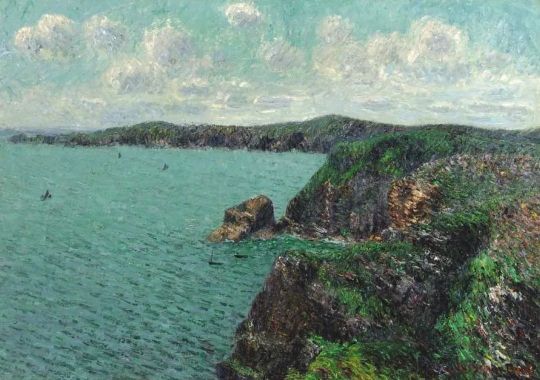
#Repost @paintings_i_love № 3103 Gustave Loiseau (French, 1865 – 1935) Falaises du Cap Frehel Dated 1905 Oil on canvas, 65.8 by 92.5cm Private collection • Gustave Loiseau was a French Post-Impressionist painter, remembered above all for his landscapes and scenes of Paris streets. He was born in Paris and was brought up there, and at Pontoise, by parents who owned a butchers shop. In 1890, he went to Pont-Aven in Brittany for the first time, fraternizing with the artists there, especially Paul Gauguin and Émile Bernard. After experimenting with Pointillism, he adopted his own approach to Post-Impressionism, painting landscapes directly from nature. His technique known as ‘en treillis’ or cross-hatching gave his works a special quality, now recognized as his speciality. Loiseau first exhibited at the Salon des Indépendants in 1893 and at the Salon de la Société Nationale in 1895 as well as at impressionist exhibitions in 1890 and 1896. Loiseau's paintings, revealing his passion for the seasons from the beginning of spring to the harvests later in the autumn, often depict the same orchard or garden scene as time goes by. Series of this kind, which also include cliffs, harbours or churches, are reminiscent of Claude Monet. Although Loiseau did not complete many portraits, he often painted people at work: dockers together with their boats, villagers leaving a Sunday service in Brittany or arriving at the market in Pont-Aven, or even carriages in Paris driving across the Place de la Bastille and the Étoile. He is also remembered for his paintings of Paris streets such as the Rue de Clignancourt or the Avenue de Fiedland. From the 1920s, he painted many still-lifes. • • • • • • • • #Loiseau #Postimpressionismo #FrenchArt #ArtForEveryone #Art #FineArtPainting #PaintingOftheDay #Peinture #Landscape #Historiadelarte #Storiadellarte #Peintures #HistoryofArt #ArtHistory #Beauxarts #Instamuseum #Artmuseum #Pittura #Arthistorian #Peintre #malerei #19thcenturyart #20thcenturyart #Expressionism #Impressionism #Postimpressionism #GustaveLoiseau #Impressionismo #Europeanart #Impressionisme https://www.instagram.com/p/CkFZCTIICX6/?igshid=NGJjMDIxMWI=
#repost#loiseau#postimpressionismo#frenchart#artforeveryone#art#fineartpainting#paintingoftheday#peinture#landscape#historiadelarte#storiadellarte#peintures#historyofart#arthistory#beauxarts#instamuseum#artmuseum#pittura#arthistorian#peintre#malerei#19thcenturyart#20thcenturyart#expressionism#impressionism#postimpressionism#gustaveloiseau#impressionismo#europeanart
1 note
·
View note
Photo

“Les Falaises d'Yport” d'Emile Bernard (1892) à l'exposition “Collections Privées. Un voyage des Impressionnistes aux Fauves” au Musée Marmottan, février 2019.
1 note
·
View note